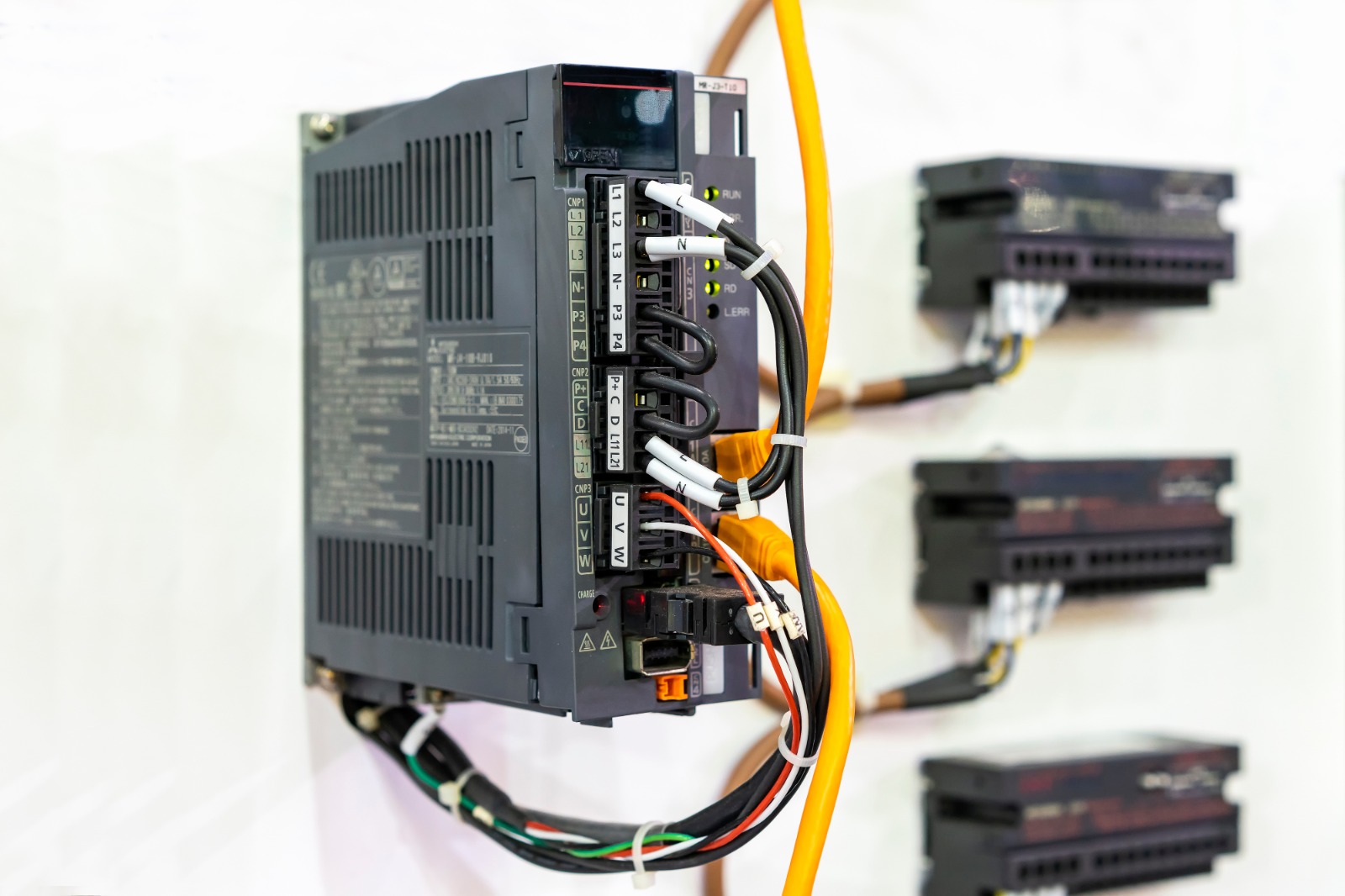Servo motors are electric motors that can move at a specific angle or rotation based on a control signal, providing precise position control. These motors are controlled as part of a servo system, enabling them to reach the desired position or angle to perform a specific task.
Servo motors operate by receiving a control signal and working alongside a feedback mechanism that uses a control circuit to rotate the motor to the desired position or angle. The feedback mechanism measures the motor’s actual position using a rotational sensor or encoder, sending the data back to the control circuit. This feedback ensures the control circuit maintains the motor at the desired position, allowing for accurate operation.
What Are Servo Drive Motors?
Servo motors are widely used in applications like robotics, CNC machines, industrial automation, aerial and maritime vehicles, medical equipment, and more. These motors are essential for tasks that require precise control.
A servo drive system is a type of electromechanical motor that can move to a specific angle or position with high precision. These motors change their position according to commands from a control signal or feedback mechanism, making them ideal for numerous industrial and robotic applications.
How Are Servo Motors Used?
Servo motors can be applied in a variety of ways. They are commonly used in robotic arms, CNC machines, automation systems, and other industrial settings. Additionally, they are found in smaller-scale applications such as toy cars, drones, and RC planes.
Typically, servo motors are used alongside a controller or driver board that generates signals to control the motor’s speed, direction, and position. Feedback signals are used to determine the motor’s position and ensure that control signals are accurately sent.
Characteristics of Servo Drive Motors
Servo motors are ideal for applications requiring precise movements. Although they are generally more expensive than other types of motors, their high precision and accuracy make them widely used in industrial and robotic applications where precise control and positioning are critical.
Servo drive systems are electronic circuits used to control servo motors. These drivers generate signals that control the motor’s position, speed, and torque.
To manage the control of servo motors, driver boards or modules are used, which also include feedback sensors that detect the motor’s position. These driver boards compare the control signal with the feedback signal to determine whether the motor is in the correct position and adjust the control signal accordingly if needed.
Types of Servo Drivers
There are different types of servo drivers. Some drivers can control a single motor, while others can manage multiple motors simultaneously. Drivers can also accept either analog or digital control signals. Analog signals typically come in the form of a voltage signal to control the motor’s speed and direction, whereas digital signals are usually in the form of digital data that control the motor’s position.

